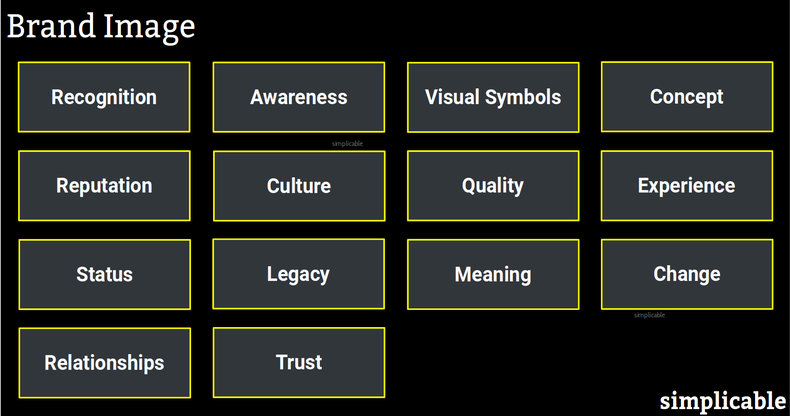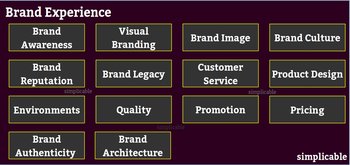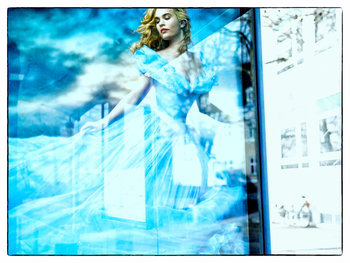

Recognition
Brand recognition is a customer's ability to recognize a brand from its name or visual symbols. Without recognition, brand image essentially doesn't exist.Awareness
Brand awareness is a customer's ability to recall basic attributes of a brand. For example, a customer who knows that a particular brand is a luxury hotel. This is important because with awareness, a customer might search for your name when they need a luxury hotel.Visual Symbols
The ability of customers to recognize your symbols such as logos or packaging. This can influence consumer choice as people tend to pick products they recognize, even if they have no information beyond a vague feeling of familiarity.Concept
Branding initiatives tend to be kept simple as it is difficult to get customers to remember complex information about your brand. If they can identify your brand name and visual symbols you are doing well. Beyond this, advertising and other promotions may attempt to communicate a basic concept such as a slogan. These are designed to be remarkably short and memorable. For example, Nike's "Just do it."Reputation
Customer opinions and feelings about your behavior, quality and performance as a firm. This is influenced by the customer journey, word of mouth and media coverage.Culture
The culture that emerges around your brand. This includes norms, behaviors and expectations of customers, employees and stakeholders that are largely beyond your control. For example, a brand of warm socks that is spontaneous adopted by snowboarding culture such that the brand becomes associated with the sport.Quality
The perceived quality of your products. Quality is how well your products and services meet customer needs and suit customer preferences.Experience
The end-to-end customer experience. For example, a single unusually positive or negative customer service interaction can completely change a customer's perception of a brand.Status
The perceived social status of a brand. For example, a brand that is perceived as youthful, stylish, luxurious, intelligent or altruistic.Legacy
The history of a brand that remains in the minds of customers. For example, a brand that is associated with antiquated and unpopular technologies.Meaning
A mission, vision or epic meaning behind a brand. For example, a brand that has reduced environmental damage with more responsible products and practices than the competition.Change
A sense that a brand is at the forefront of change such as a trendy fashion brand or an innovative technology company. Some customers have a strong motive to be involved in the change of the day due to a fear of missing out.Relationships
Relationships between your employees and customers. For example, a salesperson who represents your brand with hundreds of customers.Trust
A sense that a brand is authentic and trustworthy versus the perception that its identity is made-up. Marketing tends to go wild in representing a brand in ways that differ from the realities of the firm behind the brand. Customers can often see through this.| Overview: Brand Image | ||
Type | ||
Definition (1) | The perceptions that customers and the public hold about a brand. | |
Definition (2) | The identity of a brand in the eyes of customers. | |
Related Concepts | ||






























